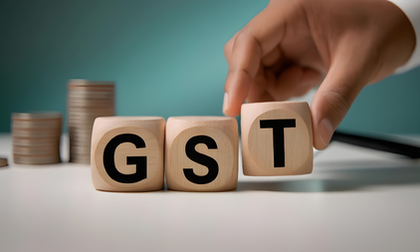GST 2.0 comes as booster shot for Uttarakhand economy
By IANS | Updated: October 21, 2025 13:10 IST2025-10-21T13:06:28+5:302025-10-21T13:10:32+5:30
New Delhi, Oct 21 The GST reforms are unlocking wide-ranging benefits across Uttarakhand’s economy, from small hill farmers ...

GST 2.0 comes as booster shot for Uttarakhand economy
New Delhi, Oct 21 The GST reforms are unlocking wide-ranging benefits across Uttarakhand’s economy, from small hill farmers cultivating traditional crops to women artisans preserving Aipan and Ringal crafts, and from homestay owners in Rishikesh to industrial workers in Rudrapur, according to an official statement issued on Tuesday.
With the GST rate reduced from 12 per cent to 5 per cent, pahari toor dal has become more competitive in organic and health food markets. The measure will benefit small farmers across Chamoli, Almora, Tehri, Nainital, and Pithoragarh districts. Uttarakhand’s red rice cultivated in Purola and Mori, is also expected to become more competitive, particularly in packaged and health food markets.
Similarly, farmers growing the GI-tagged Lakhori Mirchi from Almora, known for its distinctive aroma and flavour, will benefit due to the GST rate cut from 12 per cent to 5 per cent.
Tourism, including hotels and restaurants, contributes 13.6 per cent to Uttarakhand’s economy and provides employment to nearly 80,000 people directly and indirectly. With the GST rate on hotel tariffs up to Rs 7,500 reduced from 12 per cent to 5 per cent, the reform is expected to make travel more affordable and benefit small hotels, restaurants, and homestays across Nainital, Mussoorie, Auli, Chopta, Munsyari, Haridwar, and Rishikesh.
Across Uttarakhand’s hill districts, locally hand-knitted sweaters, caps, and socks form an important seasonal cottage industry led by hill women. With the GST rate reduced from 12 per cent to 5 per cent, prices are expected to fall leading an increase in demand and higher earnings. Similarly, artisans producing baskets, trays, and utility items made of ringal (hill bamboo) also stand to benefit.
Uttarakhand has 383 registered food processing units, primarily located in Rudrapur, employing nearly 30,000 people. The GST rate reduction from 12 per cent to 5 per cent is expected to improve margins, encourage value addition, and promote investment in sectors such as fruit processing, herbal products, and organic foods, strengthening the state’s agro-industrial base.
The automobile manufacturing belt across Pantnagar, Rudrapur, Haridwar, and Kashipur employs nearly 50,000 people, directly and indirectly. With the GST rate reduced from 28 per cent to 18 per cent on vehicles up to 1200cc (petrol) and 1500cc (diesel), prices are expected to fall. This will stimulate domestic demand, support manufacturers, and create additional employment opportunities across the automobile value chain.
Similarly, the medical device park located in the State Infrastructure and Industrial Development Corporation of Uttarakhand Limited (SIDCUL) industrial area will benefit due to the reduction of GST to 5 per cent on these products.
Disclaimer: This post has been auto-published from an agency feed without any modifications to the text and has not been reviewed by an editor
Open in app